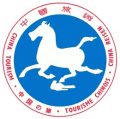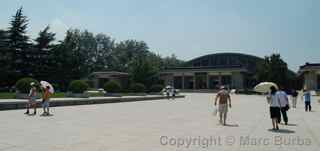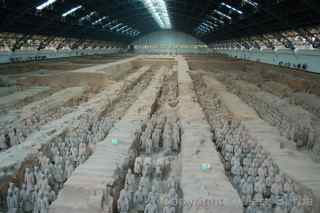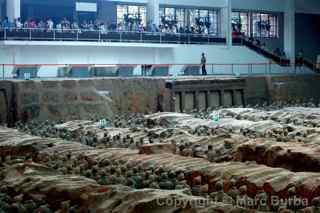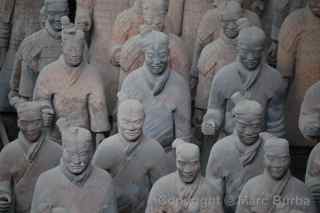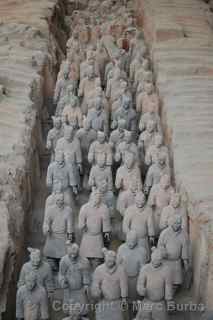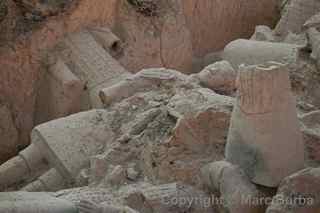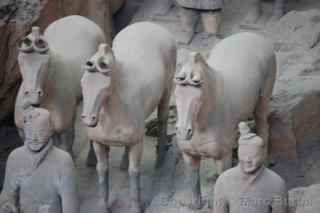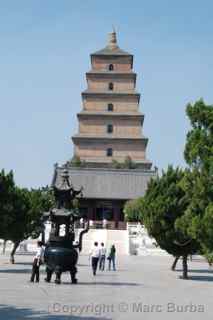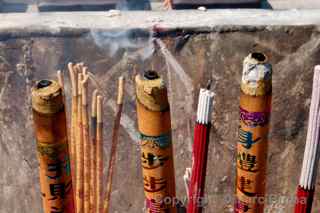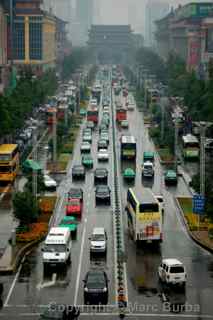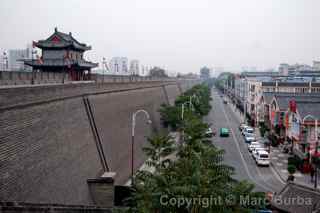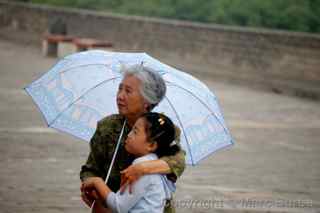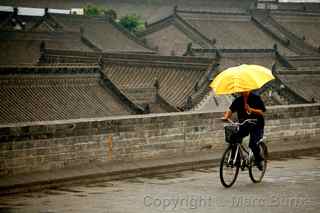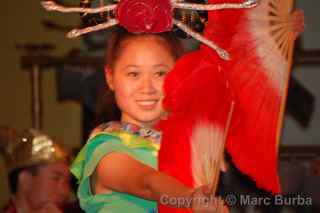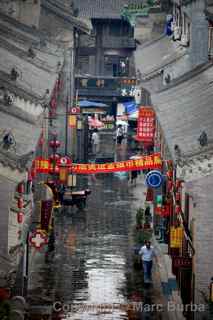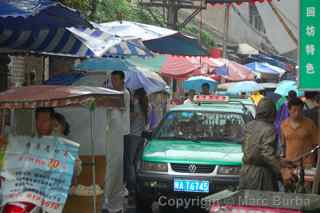Xi’an, China
 After Beijing, it was onto Xi’an — the home of 13 imperial dynasties, an ancient civilization capital, and the main eastern terminus of the Silk Road. Our goal: A visit to the Terracotta Army archaeological site about 20 miles outside the city.
After Beijing, it was onto Xi’an — the home of 13 imperial dynasties, an ancient civilization capital, and the main eastern terminus of the Silk Road. Our goal: A visit to the Terracotta Army archaeological site about 20 miles outside the city.
About 1,000 life-size figures, each with unique facial features and expressions, have been unearthed so far from the mausoleum complex of the first Qin Dynasty ruler since the site was discovered in 1974. The immense excavations are protected by a building that rivals any sports arena: the shelter over the largest pit can hold two football fields. We went along walkways above the pits to see the lined-up figures.
An estimated 7,000 soldier, chariot, and horse sculptures are buried at the site, which is more than 2,000 years old. So far, only a few pits have been excavated.
Nearby is the obligatory tourist trap churning out reproductions of the warriors. It was still interesting to see how the figures are made. We, of course, bought a few miniature warriors — I doubt a life-size one would have survived the flight back to the U.S.
Our private guide and driver helped us cut down on the hassles of finding sites on our own or battling tour groups. On the way back to the city, we saw some of the grimness of rural China, with substandard shacks for housing, poor roads, and sad-looking people.
Back in Xi’an, we stayed for a couple of days inside the ancient city walls — the most complete of its kind in the country. It was built between the years 618 and 907, and expanded during the Ming Dynasty from the mid 14th century to the mid 17th century. It is 40 feet tall, about 40 feet wide, and covers 8.5 miles. We had hoped to walk the entire wall, but persistent rain scuttled that plan. We had to settle for a pedicab ride along a portion of it.

